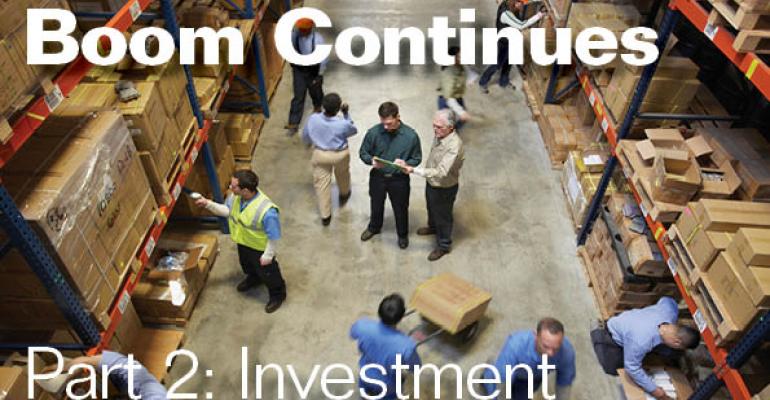Respondents estimated current cap rates to be about 7.0 percent for all industrial properties. That matches the latest estimates from research firm Real Capital Analytics (RCA), on sales completed through January 2015. On a more granular level, RCA said the average cap rates were 6.9 percent for the warehouse sector and 7.3 percent for flex space.
But that’s a blended average. SIOR experts that NREI interviewed in markets across the country observed that cap rates for prime assets are in the 4 percent to 5 percent range, depending on the market.
“Cap rates for your class-A core product are now 5.5 percent” in South Florida, says Michael Silver, SIOR, a first vice president with CBRE in Miami. “We expect, because of the activity levels and because of the expansion of the Panama Canal and the Miami International Airport, that cap rates will continue to compress and may go down another 50 basis points.”
Steve Kapp, SIOR, a senior vice president with Newmark Cornish & Carey in Hayward, Calif., adds that cap rates for top properties in the Bay Area industrial market are below 5 percent.
“We’re one of the best markets in the country right now,” Kapp says. “At the most aggressive end, cap rates are 4.75 percent down to 4.50 percent for the class-A, long-term, net-leased, warehouse product. At the upper end, properties are ranging in 7.0 to 7.5 range.”
Sentiments are mixed on where cap rates will go. On balance, respondents don’t expect cap rates to move dramatically in the next year. Roughly 37 percent of respondents expect cap rates to decrease in the next 12 months. Another 33 percent said cap rates will remain flat and 30 percent said they will rise.
Diving deeper into those results, of the 30 percent that see cap rates rising, half expect cap rates to move by only 10 or 20 basis points. A minority of respondents—10 percent overall—see cap rates rising by 50 or more basis points.
Of those respondents that expect cap rates to fall, 58 percent expect cap rates to drop by 10 or 20 basis points. Fewer than 10 percent of all respondents expect cap rates to move by 50 or more basis points.
“I don’t know if I see cap rates on the ones that are selling at 4.75 percent to 4.50 percent going down much more,” Kapp says. “I do think there will be some cap rate compression for the properties at the higher cap rates.”
The outlook meshes with the latest results from the NREI/Marcus & Millichap Investor Sentiment Survey. The study measures sentiments across all commercial real estate types. The latest survey, from the first quarter of this year, found investors remain confident in their outlook for industrial properties.
Overall, 68 percent of industrial investors expect the value of their properties to increase. A 4.4 percent increase in property values is anticipated. Given that backdrop, over half of industrial investors (51 percent) consider now a good time to buy more. An additional 35 percent prefer to hold, and 14 percent believe it is better to sell.
Last year, the industrial real estate sector saw $53.1 billion in deals, according to RCA. That marked a 10.7 percent increase over 2013’s volume of $47.96 billion and was within range of the industry’s peak between 2005 and 2007, when annual investment volume averaged $56.37 billion per year.
Last year was a big year for equity funds in the industrial sector. Volume from that class of buyers was up 90 percent compared to 2013, according to RCA. Overall, equity funds completed $8.07 billion in acquisitions. However, transaction volume from public (-55 percent) and cross-border (-39 percent) investors dropped. On balance, private investors, at $23.96 billion, accounted for 46 percent of activity in 2014, RCA reported.
On the capital markets side, 63 percent of respondents said that capital is more widely available in the industrial sector than 12 months ago. An additional 29 percent of respondents said the availability of capital is unchanged. Only 5 percent said that capital is less available than it was a year ago.
When it comes to lending, respondents expect a stable environment. Just under three-fifths of respondents (59 percent) say loan terms will remain unchanged in the next year. An additional 36 percent expect them to loosen. Only 5 percent said that loan terms will tighten in the next 12 months.
In terms of loan-to-value (LTV) ratios, 55 percent of respondents expect them to remain flat. About one-quarter of respondents (28 percent) think LTV ratios will increase between 1 percent and 5 percent and 11 percent think LTV ratios will rise between 6 percent and 10 percent. Only 6 percent of all respondents think LTV ratios will decrease in the next year.
Next Part 3 of 6: Development

